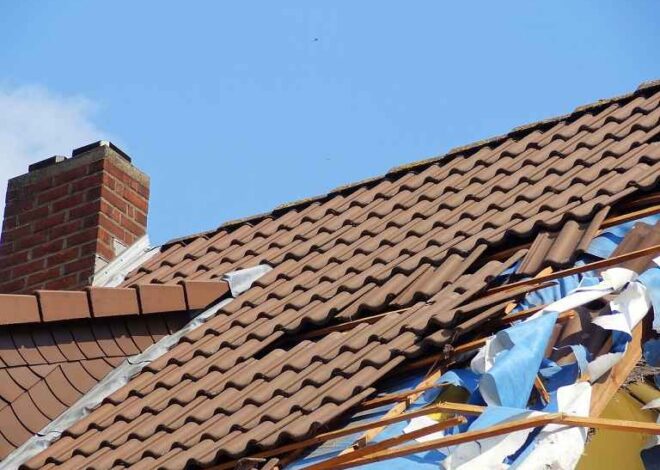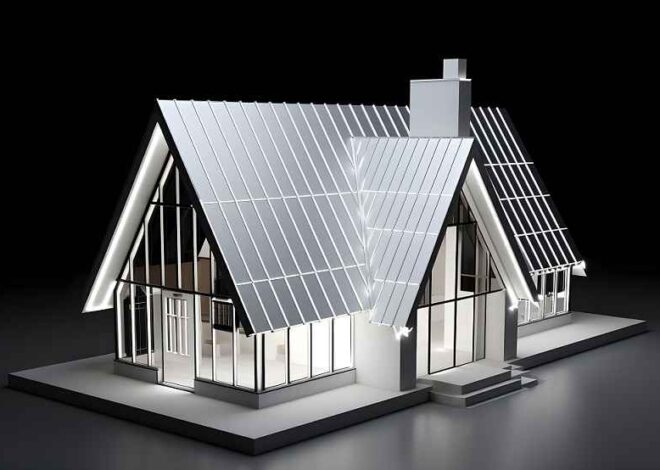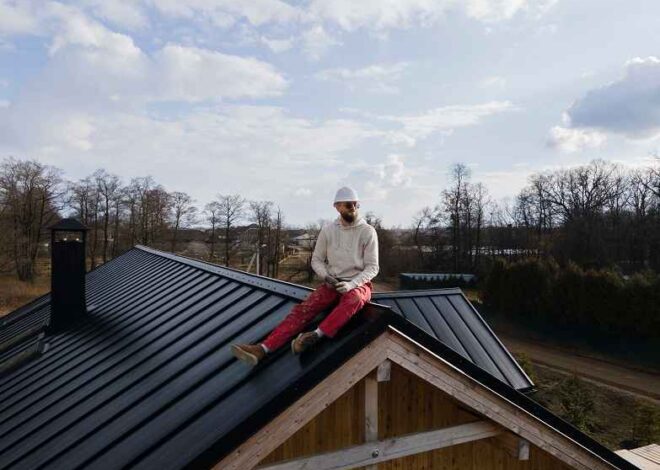
Top 5 Roofing Materials for Ultimate Weather Resistance: A Comprehensive Guide
When it comes to protecting your home from the elements, your roof is your first line of defense. Whether it’s the blistering heat of summer sun, the relentless downpour of spring storms, or even the icy grasp of winter snow, having a durable and reliable roofing material can make all the difference in keeping your sanctuary safe and sound. But with so many options available on the market, how do you choose? Fear not! In this comprehensive guide, we’re diving deep into the top five roofing materials that offer ultimate weather resistance. From classic favorites to innovative newcomers, we’ll explore their benefits, durability ratings, and ideal applications—helping you make an informed choice for your next roofing project. Get ready to elevate your home’s protection while ensuring it stands tall against whatever Mother Nature throws its way!
Introduction to the Importance of Weather Resistance in Roofing
When it comes to your home, the roof is your first line of defense against Mother Nature’s whims. From torrential downpours to blistering heatwaves, weather-resistant roofing is essential for protecting not just your property but also your peace of mind. Choosing the right roofing material can feel overwhelming with so many options available. A sound decision will ensure that your roof stands strong through whatever elements come its way.
Imagine a roof that not only enhances the beauty of your home but also offers unrivaled durability and longevity. This guide dives deep into the top five roofing materials known for their ultimate weather resistance, helping you make an informed choice tailored to your needs. Let’s explore these options together!
Factors to Consider When Choosing a Roofing Material for Weather Resistance
When selecting a roofing material for weather resistance, several key factors come into play.
First, consider the climate in your area. Extreme heat, heavy rain, or snow can all influence the best choice for your home.
Next is durability. Some materials stand up better to harsh conditions than others. Look for options that have proven longevity against storms and UV rays.
Weight is another important aspect. Heavy materials may require additional structural support, while lighter alternatives could be easier to install but may not offer the same resilience.
Don’t forget energy efficiency either. Certain materials reflect sunlight better than others, helping to keep your home cooler and reduce cooling costs during hot months.
Lastly, assess maintenance requirements. Some roofs demand regular upkeep while others are more forgiving over time—an essential consideration for long-term satisfaction with your roof choice.
Top 5 Roofing Materials for Ultimate Weather Resistance:
When it comes to weather-resistant roofing, your choice can make all the difference. Different materials offer varying levels of durability against rain, snow, and sun.
Metal roofs stand out for their strength and longevity. They repel water effectively and can withstand high winds. Options like steel or aluminum provide choices based on aesthetics and budget.
Asphalt shingles are popular due to their affordability. While they have a shorter lifespan compared to metal, modern variations come with enhanced resistance features.
Clay or concrete tiles bring a unique flair that also excels in harsh conditions. Their weight offers stability during storms but requires proper structural support.
Slate is the epitome of luxury in roofing materials. Known for its beauty and resilience, slate can endure extreme temperatures—a worthy investment if maintained properly.
Each material has its own set of advantages that suit different climates and homeowner needs.
-
Metal
Metal roofing is a popular choice for homeowners seeking weather-resistant roofing. Its durability stands out, making it ideal for extreme conditions like heavy rain, snow, and high winds.
One of the key benefits is its lifespan. Metal roofs often last 40 to 70 years with minimal maintenance. They resist rust and corrosion when properly coated.
Various types of metal materials are available, including steel, aluminum, copper, and zinc. Each offers unique aesthetics and levels of protection against the elements.
While metal roofing can be more expensive upfront than other options, many find that savings on energy bills justify the investment over time. It’s also lightweight compared to traditional shingles or tiles.
Regular inspections ensure longevity by addressing minor issues before they escalate into major problems. This proactive approach enhances their already impressive life expectancy while maintaining performance against harsh weather conditions.
-
Benefits and Drawbacks
Weather-resistant roofing materials come with their own set of advantages and disadvantages. Understanding these can help you make an informed decision.
One major benefit is durability. Materials like metal and slate can withstand harsh weather conditions, including heavy rains and strong winds. This longevity often translates to lower long-term costs.
On the downside, some options can be pricey upfront. For instance, while slate offers exceptional resilience, its high installation cost might not fit every budget.
Maintenance varies by material as well. Metal roofs may require occasional inspections for rust or damage, whereas asphalt shingles usually need more frequent replacements due to wear over time.
In addition, aesthetics play a role in your choice. While many love the classic look of clay tiles, others may find them too bulky for modern architecture. Each option has unique characteristics that appeal differently based on personal preference and regional climate factors.
-
Types of Metal Roofing Materials
Metal roofing materials come in various types, each offering unique benefits. Steel is the most common choice due to its strength and affordability. Galvanized steel has a zinc coating that enhances corrosion resistance.
Aluminum is lightweight and highly resistant to rust, making it ideal for coastal areas where salt exposure is a concern. It’s also energy-efficient, reflecting heat away from the home.
Copper provides a stunning aesthetic but comes with a higher price tag. Its natural patina develops over time, adding character and charm.
Lastly, zinc roofs are known for their longevity and low maintenance needs. They develop an attractive protective layer that helps prevent corrosion.
Choosing the right metal type can significantly influence your roof’s performance against harsh weather conditions. Each option caters to different preferences while ensuring durability and resilience.
-
Maintenance and Lifespan
Maintenance for weather-resistant roofing varies by material. Metal roofs generally require minimal upkeep, needing only occasional inspections and cleaning to prevent rust and ensure longevity. With proper care, they can last 40 years or more.
Asphalt shingles demand a bit more attention. Regular checks for damage from storms or debris are essential. While the average lifespan is around 20 years, good maintenance can extend it significantly.
Clay and concrete tiles offer durability but aren’t exempt from wear. They need inspections after heavy storms to catch any cracks or displacements early on. These materials can easily last over 50 years when cared for properly.
Slate roofs are beautiful but come with their unique challenges. They require specialized maintenance due to their weight and fragility. A well-maintained slate roof may endure for over a century, making it an investment worth considering.
Each type of weather-resistant roofing has its own needs that will determine its overall lifespan in your specific climate conditions.
-
Asphalt Shingles
Asphalt shingles are one of the most popular choices for roofing, especially in residential projects. They offer a versatile look that can complement various architectural styles.
These shingles come in two main types: three-tab and architectural. Three-tab shingles are thinner and more affordable, while architectural shingles provide added dimension and durability.
One significant advantage of asphalt shingles is their affordability combined with decent weather resistance. However, they may not perform as well under extreme conditions compared to other materials.
Maintenance is relatively simple; regular inspections can help extend their lifespan, which typically ranges from 15 to 30 years depending on quality and installation. While they’re great for many climates, it’s crucial to consider your local weather patterns when choosing this option for your home.
-
Benefits and Drawbacks
Metal roofing is known for its exceptional durability and weather resistance. It can withstand heavy winds, hail, and even fire. This makes it a popular choice in areas prone to extreme weather conditions.
On the downside, metal roofs can be more expensive upfront than traditional materials like asphalt shingles. Installation requires skilled labor, adding to overall costs.
Another drawback is noise during rain or hail storms. While some homeowners appreciate the sound as part of the charm, others find it unsettling.
However, with proper insulation and underlayment, this issue can be significantly minimized. Moreover, metal roofing may expand and contract with temperature changes. This could lead to potential leaks if not installed correctly.
Despite these drawbacks, many still see metal as an excellent long-term investment due to its longevity and low maintenance needs.
-
Types of Asphalt Shingles
Asphalt shingles are a popular choice for many homeowners due to their versatility and affordability. There are primarily two types: three-tab shingles and architectural shingles.
Three-tab shingles offer a classic, flat appearance. They consist of single-layered asphalt strips that create uniform lines across the roof. This type is often lighter on the wallet but may have a shorter lifespan compared to other options.
Architectural shingles, on the other hand, feature multiple layers. Their thicker design adds depth and dimension, with varying shapes that enhance curb appeal. These shingles not only look more appealing but also provide better durability against harsh weather conditions.
In addition to these main categories, there are impact-resistant asphalt shingles available for those in areas prone to hail or severe storms. These specialized options can withstand higher levels of impact without sustaining damage, making them an excellent long-term investment for extreme climates.
-
Maintenance and Lifespan
Metal roofing is known for its impressive lifespan, often lasting 40 to 70 years. Regular inspections are key to maintaining its integrity. Occasional cleaning of debris and checking for rust or loose seams can help prolong its life.
Asphalt shingles typically last about 20 to 30 years, depending on the quality. Routine maintenance includes clearing gutters and inspecting for damaged or missing shingles after storms. This proactive approach ensures you catch issues early.
Clay and concrete tiles boast a durability of over 50 years when properly maintained. They require less frequent upkeep but should be inspected for cracks or shifting elements that could compromise their structure.
Slate roofs can endure up to a century if well cared for. While they demand careful installation due to their weight, routine checks for broken pieces are essential in ensuring long-lasting performance without major repairs needed along the way.
-
Clay or Concrete Tiles
Clay and concrete tiles are renowned for their durability and striking appearance. They offer a classic aesthetic that enhances the character of any home. These materials come in various colors, shapes, and sizes, allowing homeowners to customize their roofs.
One significant benefit is their impressive weather resistance. They can withstand harsh elements like heavy rains, strong winds, and extreme temperatures without deteriorating. Additionally, they are fire-resistant—a crucial advantage in wildfire-prone areas.
However, weight can be a concern. Both clay and concrete tiles require sturdy structural support due to their heaviness. Installation might also demand professional expertise to ensure proper fitting.
Maintenance is relatively low-key; occasional cleaning will keep them looking fresh while preventing moss or algae buildup. With an expected lifespan of 50 years or more with proper care, these roofing options provide long-lasting protection against the elements.
-
Benefits and Drawbacks
When considering metal roofing, the benefits are hard to ignore. Its exceptional durability means it can withstand harsh weather conditions like hail, snow, and high winds. Additionally, metal roofs reflect heat from the sun, which can lower energy costs.
On the downside, initial installation costs can be higher than other materials. Some homeowners may also find that metal roofs can be noisy during rain or hail unless proper insulation is installed.
Another point to consider is denting; while many metals are strong, certain types might get dinged by heavy impacts.
In terms of aesthetics, not every homeowner appreciates the industrial look of metal roofing compared to more traditional options. Balancing these factors will help you make a well-informed decision for your home’s needs.
-
Types of Tiles
When it comes to roofing tiles, there are primarily two types: clay and concrete. Each offers distinct advantages that cater to various aesthetic preferences and architectural styles.
Clay tiles are renowned for their traditional look. They come in vibrant colors and unique shapes, making them a favorite for Mediterranean or Spanish-style homes. Their natural properties provide excellent insulation, keeping homes cooler in the summer and warmer in the winter.
On the other hand, concrete tiles offer durability at a lower cost than clay. They can mimic the appearance of wood or slate while retaining their structural integrity over time. Concrete is heavier but also more versatile in terms of design options.
Both tile types boast exceptional weather resistance, standing up well against heavy rain and strong winds. Choosing between them often depends on your home’s style and your budgetary constraints.
-
Maintenance and Lifespan
Maintenance for roofing materials varies significantly based on the type you choose. Metal roofs typically require minimal upkeep. Regular inspections help catch any rust or loose screws before they become bigger issues.
Asphalt shingles have a different story. They benefit from periodic cleaning to prevent moss and algae buildup, which can shorten their lifespan. Expect to replace them every 15 to 30 years, depending on the quality.
Clay and concrete tiles are known for their durability but still need attention. Ensure that the underlayment remains intact and check for cracked tiles after severe weather events.
Slate roofs can last over a century with proper care. However, be vigilant about inspecting for broken slates—these can compromise your roof’s overall integrity if left unattended.
Different materials mean different lifespans; understanding these differences helps in planning long-term maintenance efficiently.
-
Slate
Slate roofing is a timeless choice known for its striking beauty and exceptional durability. This natural stone material can withstand extreme weather conditions, making it an ideal option for homes in harsh climates.
One of the most significant advantages of slate is its longevity. A well-installed slate roof can last over a century with minimal maintenance. Its resistance to fire and insects adds another layer of protection that many homeowners appreciate.
However, slate comes with drawbacks as well. It’s heavy, requiring a sturdy structure to support its weight. The initial cost tends to be higher than other materials, but this investment pays off through reduced long-term upkeep.
Different types of slate exist—such as quarried or synthetic—which offer varying aesthetics and price points. Regular inspections ensure that any potential issues are caught early on, preserving the roof’s integrity for years to come.
-
Benefits and Drawbacks
Metal roofing offers a range of benefits that make it an appealing choice for homeowners. Its durability is among the top advantages, as it can withstand extreme weather conditions like heavy rain and high winds. Additionally, metal roofs are resistant to fire, reducing insurance costs.
However, there are drawbacks to consider. The initial installation cost can be higher than other materials. This might deter budget-conscious homeowners from choosing metal roofing upfront.
Noise during rainfall or hailstorms can also be a concern for some people. While insulation can help mitigate this issue, it may not entirely eliminate the sound.
Lastly, color fading over time is something to keep in mind. Although many manufacturers offer warranties against this problem, it’s still essential to research reputable options before making a decision.
-
Types of Slate Roofing Materials
Slate roofing materials come in various types, each with distinct characteristics. Natural slate is the most popular choice. Sourced from quarries, it boasts an elegant appearance and exceptional durability.
Another option is synthetic slate. Made from composite materials, it mimics the look of natural slate but at a lighter weight and lower cost. This makes installation easier while still providing impressive weather resistance.
There are also colored slates available, which enhance aesthetic appeal. These tiles can be found in shades ranging from deep blues to rich greens or even warm reds.
Lastly, some manufacturers offer factory-treated slates that resist algae growth and moss accumulation. This added protection helps maintain their beauty over time without extensive maintenance efforts required by homeowners.
Choosing the right type of slate roofing material ensures both visual charm and resilience against harsh weather conditions.
-
Maintenance and Lifes
The longevity of your roofing material is closely tied to how well you maintain it. Each type of weather-resistant roofing has its own maintenance requirements and lifespan expectations.
Metal roofs can last 40-70 years with minimal upkeep. Regular inspections are crucial for catching rust or loose panels early on. Keeping gutters clear ensures water flows away from the roof, preventing damage.
Asphalt shingles typically last 20-30 years but can require more frequent replacements if not maintained properly. Cleaning off debris and checking for missing or curled shingles helps prolong their life.
Clay or concrete tiles boast a lifespan of 50+ years when cared for well. They may need occasional repairs due to cracking but are generally low-maintenance otherwise.
Slate roofs are known for their impressive durability, often lasting over 100 years with proper care. However, they do need periodic inspections to address any broken or slipped slates promptly.
Choosing the right weather-resistant roofing material involves balancing costs, aesthetics, and maintenance needs against expected performance in adverse conditions. By understanding each option’s benefits and requirements, homeowners can make informed decisions that provide peace of mind for many years to come.


